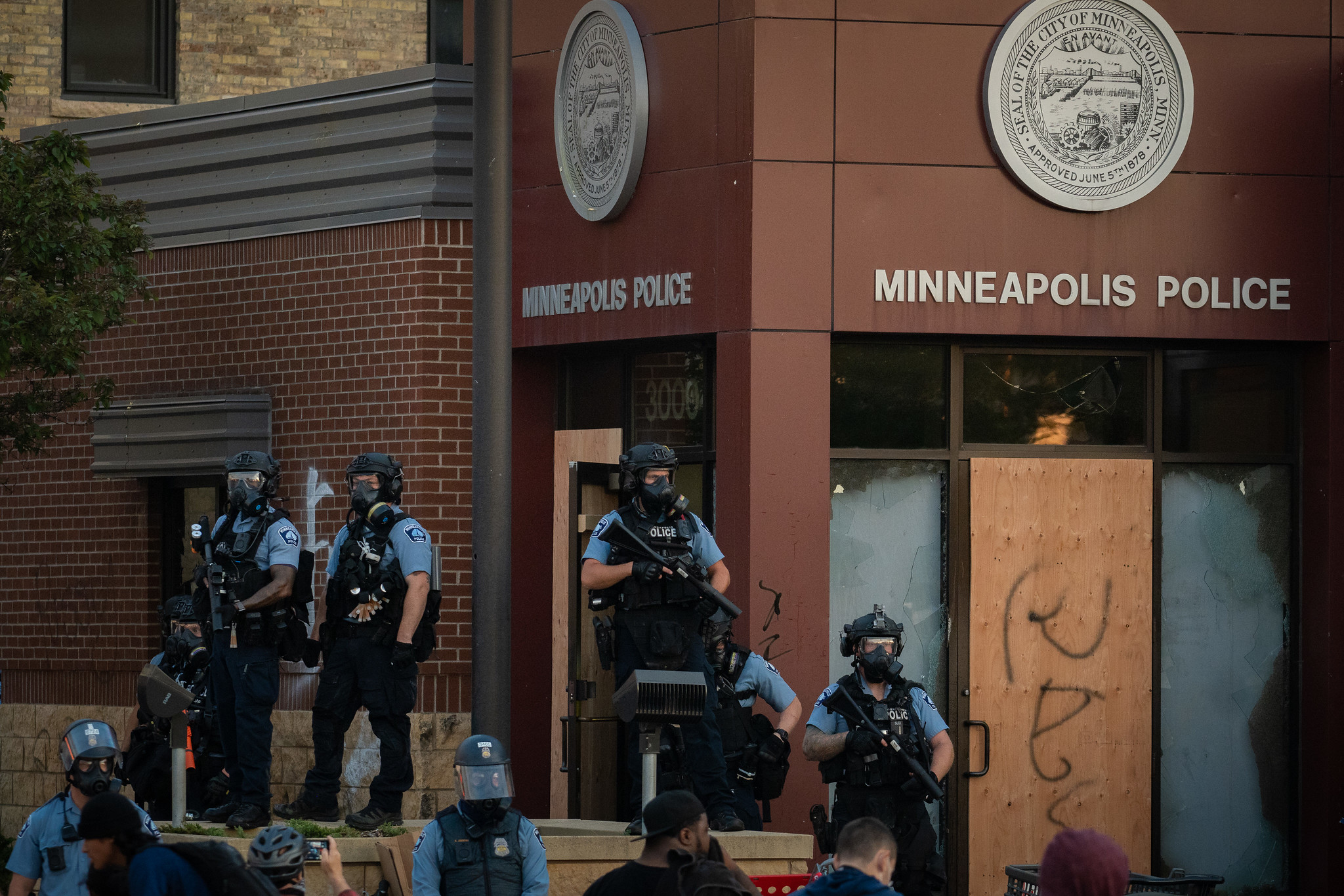On November 2, Minneapolis voters will decide whether to reshape the city’s police department from its current form, and create a Department of Public Safety to take over many of its responsibilities. The proposed department would employ mental health, substance use and homelessness outreach workers—and armed police officers, in more limited roles.
The proposal would remove a requirement mandating that a minimum number of officers remain employed. It would also require the position of police chief to receive approval from the city council before being filled—rather than just serving at the mayor’s pleasure. A “data-driven community engagement process” would determine how much funding the new department would receive if implemented.
The first initiative didn’t get past the charter commission—so voters didn’t get the chance to approve or reject it.
The murder of George Floyd by then-Minneapolis police officer Derek Chauvin on May 25, 2020, sparked a global uprising against racial police violence. In the weeks that followed, a majority of the Minneapolis City Council voted to disband the city’s police department, citing an entrenched culture of racism and abuse. But from the beginning, Mayor Jacob Frey (D) opposed the movement to abolish the police department under his command.
Ultimately, the council’s initiative failed to gain approval from the city’s charter commission—meaning voters didn’t get the chance to approve or reject it. This year, a coalition of 30 local organizations and supportive councilmembers helped collect 20,000 signatures and raise over $1 million to successfully revive the initiative and put it before the voters.
In Minneapolis, the mayor needs city council approval to appoint the leader of any city agency—except for the chief of police, whom the mayor can appoint unilaterally.
Minneapolis also requires a minimum number of police officers, and funding to employ them, written into its city charter—a unique provision not enjoyed by any other city agency. First passed in 1961, and unchanged since, the amendment mandated 1.7 officers for every 1,000 residents and $3 in annual funding for every $1,000 of taxable city property.
As of January 2021, the city had 638 employed police officers. Mandatory police officer staffing levels are the target of reform efforts throughout the country. Last November, San Francisco residents voted to repeal their own minimum police requirement. In Austin, a conservative political group that previously succeeded in reinstating a ban on homeless encampments is now campaigning to install mandatory minimums.
The ballot initiative would address both issues by giving the city council authority to appoint the police chief as well as dictate what the position entails. And it would abolish the minimum police requirement, with the provision of hiring “licensed peace officers (police officers), if necessary, to fulfill its responsibilities for public safety.”
Quite often, the results of these initiatives still functionally resemble policing.
President Biden campaigned, in part, on promises to advance racial justice—including police reform. But we have still seen no change at the federal level. What Minneapolis does next will have a ripple effect for the abolition movement in cities and towns nationwide.
Minneapolis isn’t the first city to try to reallocate public health responsibilities away from armed police. But quite often, the result still functionally resembles policing. Cities like Denver, Colorado, and Rochester, New York, have created mental health crises teams to respond to emergency calls, only to receive inadequate funding— especially in the context of bloated police department budgets.
For more than 30 years, CAHOOTS in Eugene, Oregon, has operated a program that sends civilian responders to emergencies. In 2019, under 1 percent of the group’s 24,000 responses needed police backup. No serious injury or death has ever been attributed to the program. Yet even CAHOOTS faces similar financial barriers; it operates at a loss of a half million dollars each year.
In September, Congress awarded the state of Oregon around $1 million to create additional, similar programs. Meanwhile, CAHOOTS organizers have asked their city council for $1.8 million in annual funding to stabilize and expand services. They’re still waiting.
Photograph by Chad Davis via Flickr/Creative Commons 2.0





Show Comments